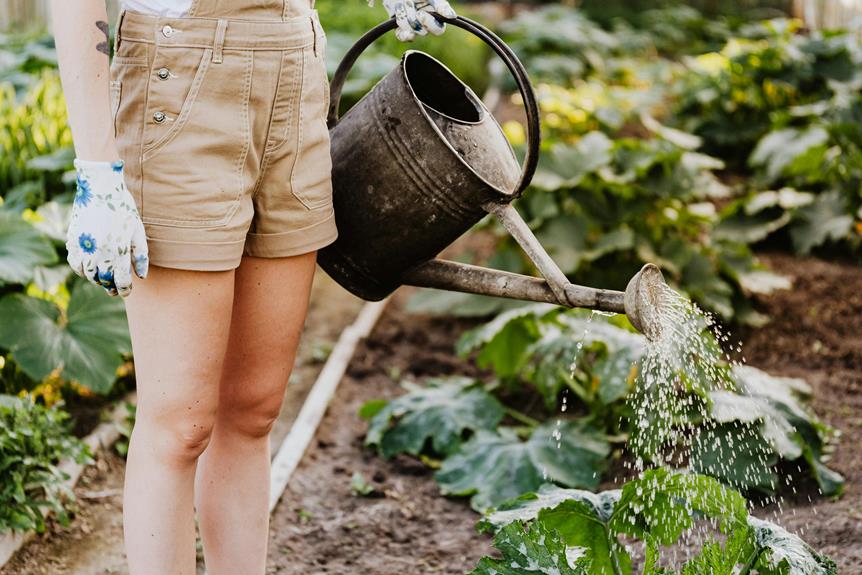
When watering different plants, tailor your approach to each type: Succulents need dry soil and a soak-and-dry routine to avoid root rot; flowering plants thrive with deep, infrequent watering at the base, preventing leaf diseases; keep leafy greens moist but not waterlogged, using a soaker hose and checking soil moisture regularly; monitor herbaceous varieties closely for soil moisture, avoiding foliage wetting. Following these tailored methods will help your plants flourish and grow beautifully.
Watering Succulents
When watering succulents, ensure the soil is completely dry before giving them a thorough soak. These plants, known for their ability to store water in their leaves, stems, or roots, have adapted to survive in arid conditions. Overwatering can lead to root rot, a common issue with succulents.
To water your succulents effectively, stick to a 'soak and dry' method. Wait until the soil is dry to the touch, typically every 1-2 weeks depending on the environment. When it's time to water, do so thoroughly until you see water draining out from the bottom of the pot. This ensures that the roots receive an adequate amount of moisture without sitting in water, which can cause them to rot.
Hydrating Flowering Plants
For optimal blooming, ensure you water flowering plants deeply but infrequently to promote healthy root growth and vibrant blossoms. When watering flowering plants, aim to saturate the soil to a depth that encourages roots to grow downwards in search of moisture. This deep watering method helps develop a robust root system that can better support the plant during the blooming period.
It's essential to water flowering plants at the base to prevent water from sitting on the leaves, which can lead to diseases like powdery mildew. Avoid overhead watering, especially during the evening, as the moisture left on leaves overnight can create a humid environment ideal for fungal growth.
Monitoring the soil moisture is crucial for flowering plants. Stick your finger into the soil to check for moisture levels; if it feels dry about an inch below the surface, it's time to water. Remember, consistency is key. By following these watering practices, you can ensure your flowering plants stay healthy and produce an abundance of beautiful blooms.
Moisturizing Leafy Greens
To keep your leafy greens healthy and vibrant, ensure they receive consistent and adequate moisture. Leafy greens like lettuce, spinach, and kale thrive when their roots are kept consistently moist but not waterlogged. The best way to achieve this is through regular, deep watering sessions. Aim to water your leafy greens at the base of the plants, near the soil, rather than overhead, to prevent moisture-related diseases.
Using a soaker hose or drip irrigation system can help deliver water directly to the roots, ensuring efficient absorption and reducing water waste through evaporation. Check the soil moisture regularly by inserting your finger into the soil up to your knuckle; if it feels dry, it's time to water. Mulching around your leafy greens can also help retain soil moisture and regulate temperature.
Nurturing Herbaceous Varieties
For optimal growth of herbaceous varieties, consistently monitor soil moisture levels to ensure they remain at an appropriate level for healthy development. Herbaceous plants, known for their non-woody stems, include a wide range of species such as basil, mint, and parsley. These plants thrive in well-draining soil that's kept consistently moist but not waterlogged.
When watering herbaceous varieties, aim to water the soil directly rather than overhead watering the foliage. This helps prevent diseases that can occur when leaves remain wet for extended periods. To check if watering is needed, insert your finger into the soil up to the first knuckle. If the soil feels dry at this depth, it's time to water.
During hot weather, herbaceous plants may require more frequent watering to combat evaporation. However, overwatering can lead to root rot and other issues. Adjust your watering schedule based on the specific needs of each herbaceous variety to promote healthy growth and flavorful harvests.




